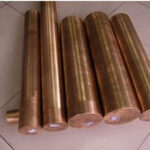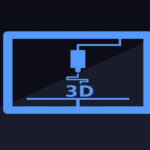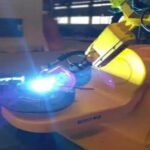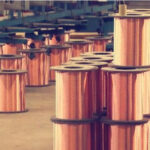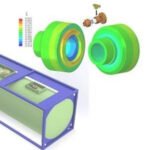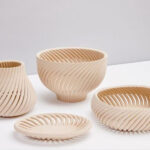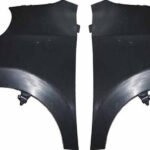Circulatory disorders, diabetes, or prolonged bed rest can cause chronic wounds that cannot heal, and there are few effective treatment options. The materials science research team from Keele University (CAU) and colleagues from Harvard Medical School in the U.S. and the Schleswig-Holstein University Medical Center (UKSH) from Dankook University in South Korea have developed an enhanced healing method.
The functional wound patch can be adjusted individually for each patient. The 3D printed patch has antibacterial properties, provides oxygen and moisture to the wound, and supports the formation of new tissue. These characteristics are activated and controlled by radiation. Scientists from materials science and medicine recently presented their concept Advanced Functional Materials in scientific journals.
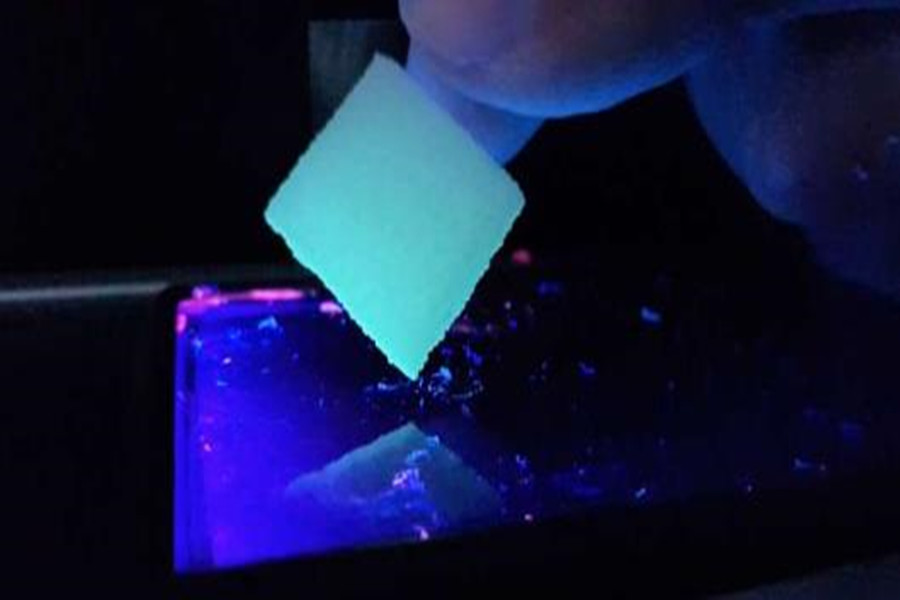
The basis of the newly developed patch is medical hydrogel. Due to its 90% high water content and relatively large micro-scale spacing, this patch can provide the best care for chronic dry wounds. However, the most important ingredient is the antibacterial zinc oxide particles, which react to light and were developed by materials science researchers at Keele. Together with a team at Brigham and Women’s Hospital at Harvard Medical School in Boston, they found a way to apply special proteins to particles. These proteins are activated by cell-friendly green light, which stimulates the formation of new blood vessels. Improved blood circulation creates new tissue, allowing the wound to close.
By controlling the effect of the patch with light, we can adjust the treatment process and dosage according to the individual needs of the patient, said Rainer Adelung, professor of functional nanomaterials at the Institute of Materials Science at Keele University and a spokesperson for the institute. . Materials science calls them “smart” materials, which can independently respond to external stimuli and can be controlled by them. Hydrogel patches with similar functions already exist, and they can also be activated in a targeted manner-but their therapeutic effects are triggered by thermal or electrical signals. However, the disadvantage of these concepts is that the wound will also heat up and the hydrogel will begin to decompose, Adelung explained.
The research team hopes that in the long run, clinics can use 3D printers to produce multifunctional and controllable patches on their own, and activate the patches directly on the patient through a very bright green LED. The shape of the patch, the concentration of zinc oxide particles and the type of protein can all be individually adjusted by 3D printing, said the first author, Dr. Leonard Siebert, who has just completed his PhD. Keele University’s innovative 3D printing method. During several months of research at the prestigious Harvard Medical School in Boston, materials scientists conducted research in the working group of Professor Su Ryon Shin, who used a special biological 3D printer to produce medical hydrogels. Our particles have a quadruped shape, that is, they are composed of several ‘arms’.
In addition, Kiel materials scientists work closely with CAU and Professor Helmut Fickenscher, an infection medicine expert at the Schleswig-Holstein University Medical Center (UKSH). He and his team tested the antibacterial properties of the patch: They placed the patch on the bacterial biofilm for 72 hours and found that the bacteria did not proliferate within a radius of a few millimeters around the patch. In this test, we used two typical wound bacteria with two completely different structures: Staphylococcus aureus and Pseudomonas aeruginosa. The patch has a therapeutic effect on both basic types, which shows that it has a universal effect, concludes Dr. Gregor Maschkowitz, a medical microbiologist. UKSH. Further in vivo testing was conducted at the NBM Global Regenerative Medicine Research Center at Dankook University in South Korea. The preliminary results there also showed that the patch was well tolerated and improved wound healing.
This patch is an exciting concept of personalized medicine, using customized treatments to treat people as accurately, effectively and gently as possible. This is a concrete example of the potential for cooperation between medicine and materials science, which will become increasingly important in the medical field. Professor Fickenscher said when talking about interdisciplinary cooperation projects. Now that the initial tests show that their concept works well in principle, the researchers hope to further improve the control of the use of light so that in the future they can provide patients with more effective personalized wound treatments.
Link to this article: 3D printing hydrogel can accelerate the healing of chronic wounds
Reprint Statement: If there are no special instructions, all articles on this site are original. Please indicate the source for reprinting:https://www.cncmachiningptj.com/,thanks!
 PTJ® provides a full range of Custom Precision cnc machining china services.ISO 9001:2015 &AS-9100 certified. 3, 4 and 5-axis rapid precision CNC machining services including milling, sheet metal to customer specifications,Capable of metal & plastic machined parts with +/-0.005 mm tolerance.Secondary services include CNC and conventional grinding, laser cutting,drilling,die casting,sheet metal and stamping.Providing prototypes, full production runs, technical support and full inspection.Serves the automotive, aerospace, mold&fixture,led lighting,medical,bicycle, and consumer electronics industries. On-time delivery.Tell us a little about your project’s budget and expected delivery time. We will strategize with you to provide the most cost-effective services to help you reach your target,Welcome to Contact us ( [email protected] ) directly for your new project.
PTJ® provides a full range of Custom Precision cnc machining china services.ISO 9001:2015 &AS-9100 certified. 3, 4 and 5-axis rapid precision CNC machining services including milling, sheet metal to customer specifications,Capable of metal & plastic machined parts with +/-0.005 mm tolerance.Secondary services include CNC and conventional grinding, laser cutting,drilling,die casting,sheet metal and stamping.Providing prototypes, full production runs, technical support and full inspection.Serves the automotive, aerospace, mold&fixture,led lighting,medical,bicycle, and consumer electronics industries. On-time delivery.Tell us a little about your project’s budget and expected delivery time. We will strategize with you to provide the most cost-effective services to help you reach your target,Welcome to Contact us ( [email protected] ) directly for your new project.
Table of Contents
Link to this article:3D printing hydrogel can accelerate the healing of chronic wounds
Reprint Statement: If there are no special instructions, all articles on this site are original. Please indicate the source for reprinting.:Cnc Machining,Thank!^^

